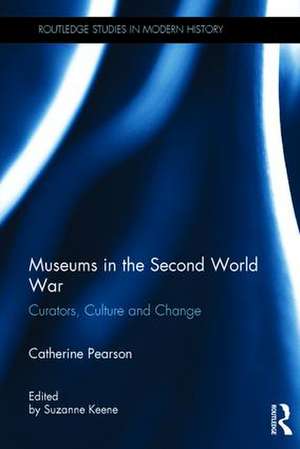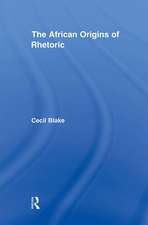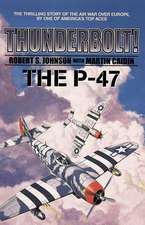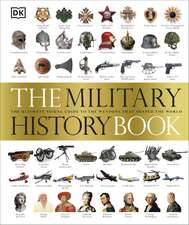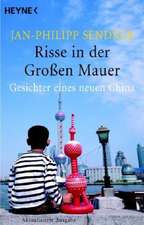Museums in the Second World War: Curators, Culture and Change: Routledge Studies in Modern History
Autor Catherine Pearson Editat de Suzanne Keeneen Limba Engleză Hardback – 6 iun 2017
At the outbreak of war precious objects were stored away and staff numbers reduced, but although many museums were closed, others successfully campaigned to remain open. By providing innovative modern exhibitions and education initiatives they became popular and valued venues for the public. After the war, however, museums returned to their more traditional, collections-centred approach and failed to negotiate the public funding needed for reconstruction based on this narrower view of their role. Hence, in the longer term, the destruction and economic and social consequences of the conflict served to delay aspirations for reconstruction until the 1960s. Through this lens, the history of the museum in the mid-twentieth century appears as one shaped by the effects of war but equally determined by the input of curators, audiences and the state. The museum thus emerges not as an isolated institution concerned only with presenting the past but as a product of the changing conflicts and cultures within society.
| Toate formatele și edițiile | Preț | Express |
|---|---|---|
| Paperback (1) | 257.00 lei 6-8 săpt. | |
| Taylor & Francis – 30 iun 2020 | 257.00 lei 6-8 săpt. | |
| Hardback (1) | 762.64 lei 6-8 săpt. | |
| Taylor & Francis – 6 iun 2017 | 762.64 lei 6-8 săpt. |
Din seria Routledge Studies in Modern History
-
 Preț: 259.54 lei
Preț: 259.54 lei -
 Preț: 252.85 lei
Preț: 252.85 lei - 14%
 Preț: 763.72 lei
Preț: 763.72 lei - 26%
 Preț: 764.86 lei
Preț: 764.86 lei -
 Preț: 256.19 lei
Preț: 256.19 lei - 14%
 Preț: 763.58 lei
Preț: 763.58 lei - 26%
 Preț: 762.33 lei
Preț: 762.33 lei - 26%
 Preț: 759.80 lei
Preț: 759.80 lei - 18%
 Preț: 239.76 lei
Preț: 239.76 lei - 26%
 Preț: 762.96 lei
Preț: 762.96 lei - 26%
 Preț: 760.21 lei
Preț: 760.21 lei - 13%
 Preț: 296.29 lei
Preț: 296.29 lei - 13%
 Preț: 311.13 lei
Preț: 311.13 lei - 13%
 Preț: 297.82 lei
Preț: 297.82 lei - 23%
 Preț: 322.80 lei
Preț: 322.80 lei - 26%
 Preț: 759.80 lei
Preț: 759.80 lei - 26%
 Preț: 845.28 lei
Preț: 845.28 lei - 26%
 Preț: 759.80 lei
Preț: 759.80 lei - 26%
 Preț: 870.09 lei
Preț: 870.09 lei - 26%
 Preț: 676.82 lei
Preț: 676.82 lei - 13%
 Preț: 295.84 lei
Preț: 295.84 lei - 26%
 Preț: 815.60 lei
Preț: 815.60 lei - 23%
 Preț: 316.91 lei
Preț: 316.91 lei - 26%
 Preț: 760.21 lei
Preț: 760.21 lei - 22%
 Preț: 324.83 lei
Preț: 324.83 lei - 26%
 Preț: 758.57 lei
Preț: 758.57 lei - 26%
 Preț: 818.67 lei
Preț: 818.67 lei - 49%
 Preț: 566.91 lei
Preț: 566.91 lei - 13%
 Preț: 297.82 lei
Preț: 297.82 lei - 13%
 Preț: 303.33 lei
Preț: 303.33 lei - 26%
 Preț: 762.00 lei
Preț: 762.00 lei - 26%
 Preț: 871.31 lei
Preț: 871.31 lei - 26%
 Preț: 759.80 lei
Preț: 759.80 lei - 26%
 Preț: 815.19 lei
Preț: 815.19 lei - 26%
 Preț: 762.00 lei
Preț: 762.00 lei - 26%
 Preț: 842.21 lei
Preț: 842.21 lei - 26%
 Preț: 734.98 lei
Preț: 734.98 lei - 26%
 Preț: 847.09 lei
Preț: 847.09 lei - 26%
 Preț: 762.64 lei
Preț: 762.64 lei - 26%
 Preț: 815.99 lei
Preț: 815.99 lei - 26%
 Preț: 759.80 lei
Preț: 759.80 lei
Preț: 762.64 lei
Preț vechi: 1029.08 lei
-26% Nou
Puncte Express: 1144
Preț estimativ în valută:
145.96€ • 153.98$ • 121.64£
145.96€ • 153.98$ • 121.64£
Carte tipărită la comandă
Livrare economică 02-16 ianuarie 25
Preluare comenzi: 021 569.72.76
Specificații
ISBN-13: 9781472479686
ISBN-10: 1472479688
Pagini: 296
Ilustrații: 128
Dimensiuni: 156 x 234 x 20 mm
Greutate: 0.61 kg
Ediția:1
Editura: Taylor & Francis
Colecția Routledge
Seria Routledge Studies in Modern History
Locul publicării:Oxford, United Kingdom
ISBN-10: 1472479688
Pagini: 296
Ilustrații: 128
Dimensiuni: 156 x 234 x 20 mm
Greutate: 0.61 kg
Ediția:1
Editura: Taylor & Francis
Colecția Routledge
Seria Routledge Studies in Modern History
Locul publicării:Oxford, United Kingdom
Public țintă
PostgraduateCuprins
Timeline: Major events around the Second World War and the Home Front
Introduction: a new perspective
A new perspective on wartime museums
The accepted history
Museums in the mid twentieth century
Sources and evidence
Organisations
Individuals in politics and organisations
Individuals in museums
PART I: 1918–1939: Between the wars
Chapter 1 Between the wars: museums and cultural politics
Education, the electorate and museums
The need to reform the museum service
The Miers Report and the Royal Commission on National Museums and Galleries
Towards modernity
Regional museum federations
A significant period for museums
Chapter 2 Charting progress: the Markham report
Social and economic reforms: the context for the review
Education and citizenship
The bid for a nationwide museum service
The Second World War: impediment or impetus?
Miers and Markham: the modernising agenda
Chapter 3 Museums before the war: the context for reform
The context for reform
Markham recommends a community based service
Museums and identity
Education in museums
Employment and qualifications – women and men
A new vision for provincial museums
Part II: 1939–1940: At the start of the war
Chapter 4 Confronting conflict: collections, closings and openings
Protecting the collections
Museums as war begins
1939 – The campaign to remain open: classes and concerts
1939: Openings and closings
1940: The Blitz – national museums close again
Chapter 5 As war begins: from propaganda to recognition
1938–1939: Hopes for a Royal Commission
1939: Resistance to propaganda
1940–1941: Exhibits poorly conceived: propaganda withdrawn
1942: From propaganda to war artists
Visitors play an active part
Museums respond to wartime visitors’ needs
PART III: 1941–1944: During wartime
Chapter 6 State support: the Council for the Encouragement of Music and the Arts (CEMA)
1940: A significant year for culture
The Council for the Encouragement of Music and the Arts (CEMA) created
1940: The establishment of CEMA
1942: The Treasury funds CEMA – Keynes as Chair
Museum collaboration, alliances and federations
Funded for success
Chapter 7 Temples to the arts
CEMA and the arts in wartime
Music in museums
CEMA and art exhibitions in provincial galleries
The National Gallery’s support for provincial museums
Public enthusiasm for new services exceeds expectations
Chapter 8 Planning for peacetime
1940–1945: Museums plan for reconstruction
The Museums Association’s 1942 Memorandum on reconstruction
The Museums Association loses momentum
1944 Education Act: no provision for cultural initiatives
PART IV: Reflections on wartime practice
Chapter 9 Community engagement, education and exhibitions
Education services develop
Education services in wartime
1939: Adult education to boost conscript morale
Would innovations survive?
Exhibitions: a wartime service
Cultural centres, citizenship and demobilisation
Disruption, ideas and new meanings
Focus on public service
Chapter 10 Audiences in wartime
Recorded visitor figures
Contemporary evidence
Why more visitors
Who were the visitors?
Reasons for visiting: popularity of culture
Changing perceptions of the museum: two wartime films
The new audience centred approach in wartime regional museums
Tables – visitor attendance numbers
Chapter 11 Memory and identity
Memory in the museum space
Memories of buildings and experience
Memories of objects
Memories based on an unexpected use of the museum
Memories of shared experience
Museums and those who did not visit
New perceptions of museums and objects
Chapter 12 Museum staff and the war
Museum staff in wartime
Women working in wartime museums
After the war
The long term cost to the museum profession
Professionals and amateurs
Professionalism – the unexpected consequences
PART V: 1944–1949 The aftermath of the war
Chapter 13 A national museum service: the final bid
1945: A final bid for a National Museum Service
Behind the scenes in government
1945: Rejection again for the Museums Association
1945: The Museums Association resumes negotiations
Museums Association intransigence loses last chance for a national service
Chapter 14 The post-war decades: museums in the aftermath of war
Austerity, continuity and change
Success and failure after the war
1945–1950s: The decline of temporary exhibitions
Museums and the Arts Council
Changing approaches in museums
The Museums Association: a diminished organisation
For museums: the consequences of the war
PART VI: 1950–1964 From austerity to reconstruction
Chapter 15 Towards a regional service
Low priority and government neglect in peacetime
The Museums Association in the 1950s
1955–1956: Museums’ joint proposal with Standing Commission and Arts Council
1956: The government reception of Museums Association’s 1955 proposals
From 1956: The Museums Association turns towards a regional service
The Standing Commission promotes regional support
Late 1950s: Public pressure for museum renewal
1959–1960: Attention turns to culture
1960–1963: The Rosse Report
Regional organisation: from federations to Area Museum Councils
The lessons of wartime disregarded
Political oblivion for museums’ wartime success
Chapter 16 Conclusions: museums forget their past
Museums ignore their past
Why has wartime success been overlooked?
Reasons for wartime success
Pre-war ideas implemented in innovative services
Nationwide collaboration, the National Gallery
Challenges to museum authority
The costs of war
Peacetime return to traditional collections concerns
The past is intrinsic to museums
After the war: the complexities of peacetime
Appendix: Primary sources
List of references
Introduction: a new perspective
A new perspective on wartime museums
The accepted history
Museums in the mid twentieth century
Sources and evidence
Organisations
Individuals in politics and organisations
Individuals in museums
PART I: 1918–1939: Between the wars
Chapter 1 Between the wars: museums and cultural politics
Education, the electorate and museums
The need to reform the museum service
The Miers Report and the Royal Commission on National Museums and Galleries
Towards modernity
Regional museum federations
A significant period for museums
Chapter 2 Charting progress: the Markham report
Social and economic reforms: the context for the review
Education and citizenship
The bid for a nationwide museum service
The Second World War: impediment or impetus?
Miers and Markham: the modernising agenda
Chapter 3 Museums before the war: the context for reform
The context for reform
Markham recommends a community based service
Museums and identity
Education in museums
Employment and qualifications – women and men
A new vision for provincial museums
Part II: 1939–1940: At the start of the war
Chapter 4 Confronting conflict: collections, closings and openings
Protecting the collections
Museums as war begins
1939 – The campaign to remain open: classes and concerts
1939: Openings and closings
1940: The Blitz – national museums close again
Chapter 5 As war begins: from propaganda to recognition
1938–1939: Hopes for a Royal Commission
1939: Resistance to propaganda
1940–1941: Exhibits poorly conceived: propaganda withdrawn
1942: From propaganda to war artists
Visitors play an active part
Museums respond to wartime visitors’ needs
PART III: 1941–1944: During wartime
Chapter 6 State support: the Council for the Encouragement of Music and the Arts (CEMA)
1940: A significant year for culture
The Council for the Encouragement of Music and the Arts (CEMA) created
1940: The establishment of CEMA
1942: The Treasury funds CEMA – Keynes as Chair
Museum collaboration, alliances and federations
Funded for success
Chapter 7 Temples to the arts
CEMA and the arts in wartime
Music in museums
CEMA and art exhibitions in provincial galleries
The National Gallery’s support for provincial museums
Public enthusiasm for new services exceeds expectations
Chapter 8 Planning for peacetime
1940–1945: Museums plan for reconstruction
The Museums Association’s 1942 Memorandum on reconstruction
The Museums Association loses momentum
1944 Education Act: no provision for cultural initiatives
PART IV: Reflections on wartime practice
Chapter 9 Community engagement, education and exhibitions
Education services develop
Education services in wartime
1939: Adult education to boost conscript morale
Would innovations survive?
Exhibitions: a wartime service
Cultural centres, citizenship and demobilisation
Disruption, ideas and new meanings
Focus on public service
Chapter 10 Audiences in wartime
Recorded visitor figures
Contemporary evidence
Why more visitors
Who were the visitors?
Reasons for visiting: popularity of culture
Changing perceptions of the museum: two wartime films
The new audience centred approach in wartime regional museums
Tables – visitor attendance numbers
Chapter 11 Memory and identity
Memory in the museum space
Memories of buildings and experience
Memories of objects
Memories based on an unexpected use of the museum
Memories of shared experience
Museums and those who did not visit
New perceptions of museums and objects
Chapter 12 Museum staff and the war
Museum staff in wartime
Women working in wartime museums
After the war
The long term cost to the museum profession
Professionals and amateurs
Professionalism – the unexpected consequences
PART V: 1944–1949 The aftermath of the war
Chapter 13 A national museum service: the final bid
1945: A final bid for a National Museum Service
Behind the scenes in government
1945: Rejection again for the Museums Association
1945: The Museums Association resumes negotiations
Museums Association intransigence loses last chance for a national service
Chapter 14 The post-war decades: museums in the aftermath of war
Austerity, continuity and change
Success and failure after the war
1945–1950s: The decline of temporary exhibitions
Museums and the Arts Council
Changing approaches in museums
The Museums Association: a diminished organisation
For museums: the consequences of the war
PART VI: 1950–1964 From austerity to reconstruction
Chapter 15 Towards a regional service
Low priority and government neglect in peacetime
The Museums Association in the 1950s
1955–1956: Museums’ joint proposal with Standing Commission and Arts Council
1956: The government reception of Museums Association’s 1955 proposals
From 1956: The Museums Association turns towards a regional service
The Standing Commission promotes regional support
Late 1950s: Public pressure for museum renewal
1959–1960: Attention turns to culture
1960–1963: The Rosse Report
Regional organisation: from federations to Area Museum Councils
The lessons of wartime disregarded
Political oblivion for museums’ wartime success
Chapter 16 Conclusions: museums forget their past
Museums ignore their past
Why has wartime success been overlooked?
Reasons for wartime success
Pre-war ideas implemented in innovative services
Nationwide collaboration, the National Gallery
Challenges to museum authority
The costs of war
Peacetime return to traditional collections concerns
The past is intrinsic to museums
After the war: the complexities of peacetime
Appendix: Primary sources
List of references
Notă biografică
Catherine Pearson, Author, Independent Historian and Scholar, UK. She is the editor of the journals of museum curator, E.J. Rudsdale, 1920-1951.
Suzanne Keene, Editor, Reader Emeritus at University College London. She has a number of published books on museum collections, most recently co-authoring Museums and Silent Objects: Designing Effective Exhibitions.
Suzanne Keene, Editor, Reader Emeritus at University College London. She has a number of published books on museum collections, most recently co-authoring Museums and Silent Objects: Designing Effective Exhibitions.
Descriere
Exploring the role of museums, galleries and curators during the upheaval of the Second World War, this book challenges the accepted view of a hiatus in museum services during the conflict and its immediate aftermath. Instead it argues that new thinking in the 1930s was realised in a number of promising initiatives during the war only to fail during the fragmented post-war recovery. Based on new research including interviews with retired museum staff, letters, diaries, museum archives and government records, this study reveals a complex picture of both innovation and inertia.
